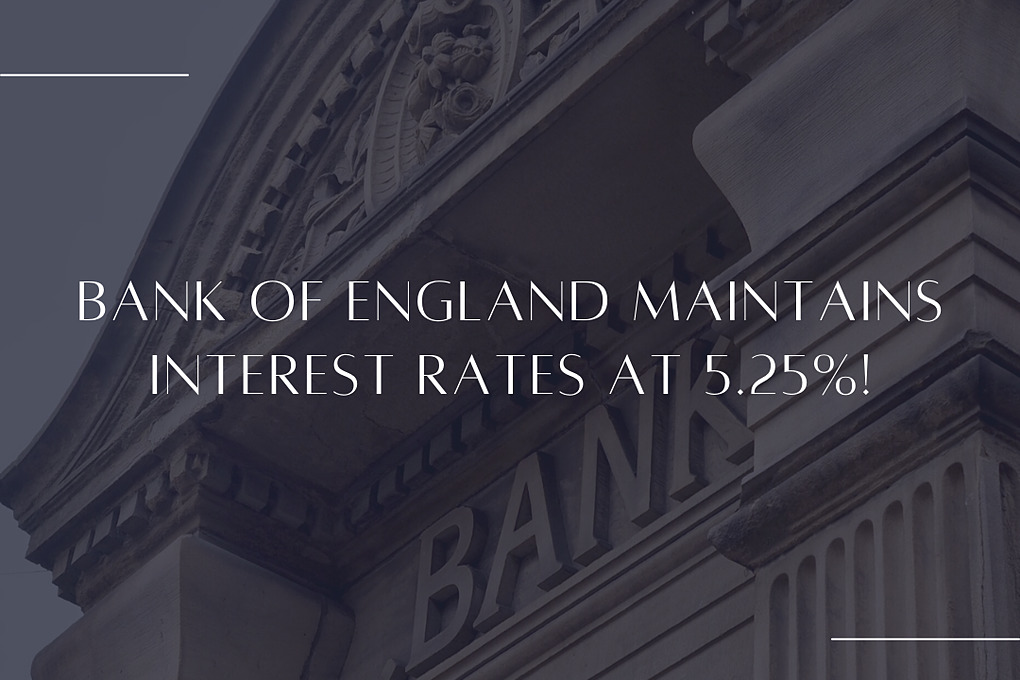Bank of England maintains Interest Rates at 5.25%!

- Feb 1st 2024
The Bank of England's recent decision to maintain the interest rate at 5.25% marks a significant moment in the current economic landscape. This decision, while expected, comes with an undercurrent of anticipation for a potential shift in monetary policy direction. The Bank's hint at a possible interest rate cut in the near future offers a glimmer of hope for a change in the economic tide, especially with the forecast of inflation dipping below the 2% target by May. This development, although temporary, signals a crucial pivot point in the Bank's strategy to combat inflation and stimulate economic growth.
Understanding the Decision
At the core of the Bank of England's decision lies a careful balancing act. Despite the positive trajectory of falling inflation rates, from a peak of 10% a year ago to the current 4%, the Bank remains cautious. Governor Andrew Bailey's statement underscores the need for more concrete evidence that inflation will not only reach the 2% target but will also remain stable at that level. This cautious stance is rooted in the Bank's responsibility to ensure long-term economic stability, amidst ongoing challenges such as the cost of living crisis and potential risks from global conflicts affecting shipping routes, notably in the Red Sea.
The decision not to alter the interest rate, despite a three-way split among the Monetary Policy Committee (MPC) members, reflects a nuanced approach to policy-making. While one member advocated for an immediate cut to borrowing costs, others pushed for an increase, highlighting diverse perspectives on how best to navigate the current economic uncertainties.
Implications for the Economy and the Public
The prospect of an interest rate cut brings several implications for the economy and the general public. For homeowners and borrowers, a reduction in borrowing costs could ease the financial burden of mortgages and loans, potentially stimulating consumer spending and investment. Conversely, savers might find themselves earning less interest on their deposits, a trade-off in the broader strategy to bolster economic growth.
For the government, particularly in the run-up to a general election, the prospect of lower interest rates and inflation could serve as a political boon. It promises relief for households and businesses, potentially swaying public sentiment. Moreover, a slight uptick in GDP forecasts, from zero growth to a modest quarter percentage point increase, offers a glimmer of hope for the country's economic trajectory.
Navigating Forward
The Bank of England's indication that borrowing costs will need to remain "restrictive for an extended period" to achieve a sustainable return to the 2% inflation target is a clear signal that the path ahead is fraught with complexities. The balancing act between stimulating economic growth and containing inflationary pressures, especially in the services sector and job market, requires a nuanced and dynamic approach to monetary policy.
As we look forward, the economic landscape remains uncertain. The potential impacts of global conflicts, ongoing inflationary pressures, and the dynamics of the job market present challenges that the Bank of England and policymakers must navigate with caution and precision. The hinted-at interest rate cut is a pivotal moment, signalling a possible shift in strategy that could redefine the economic outlook for the UK.
In conclusion, the Bank of England's latest announcement is more than just a decision to hold interest rates steady; it is a statement of intent and a reflection of the complex economic challenges that lie ahead. As policymakers, businesses, and the public decipher these signals, the coming months will be crucial in shaping the trajectory of the UK's economic recovery and growth.








